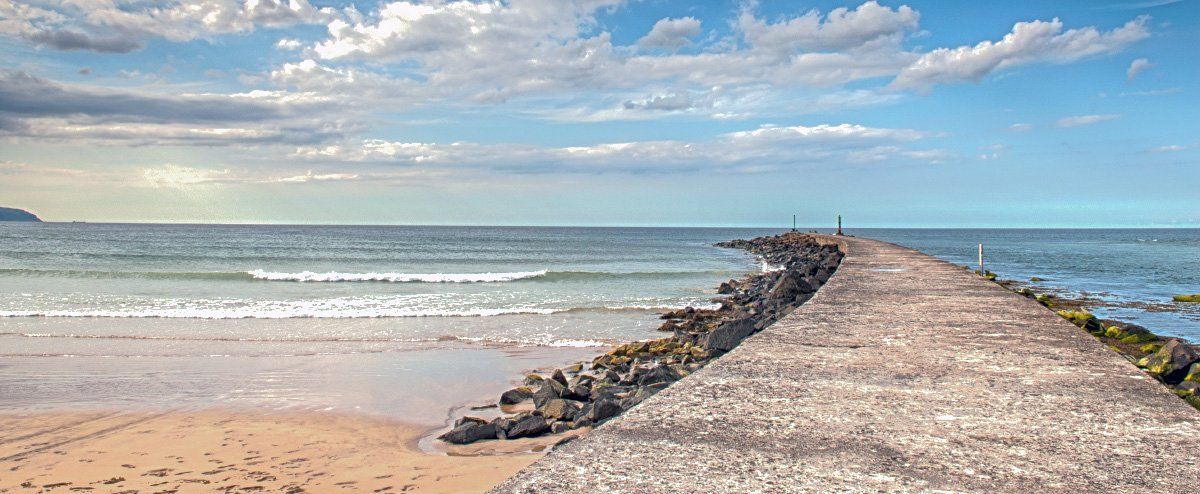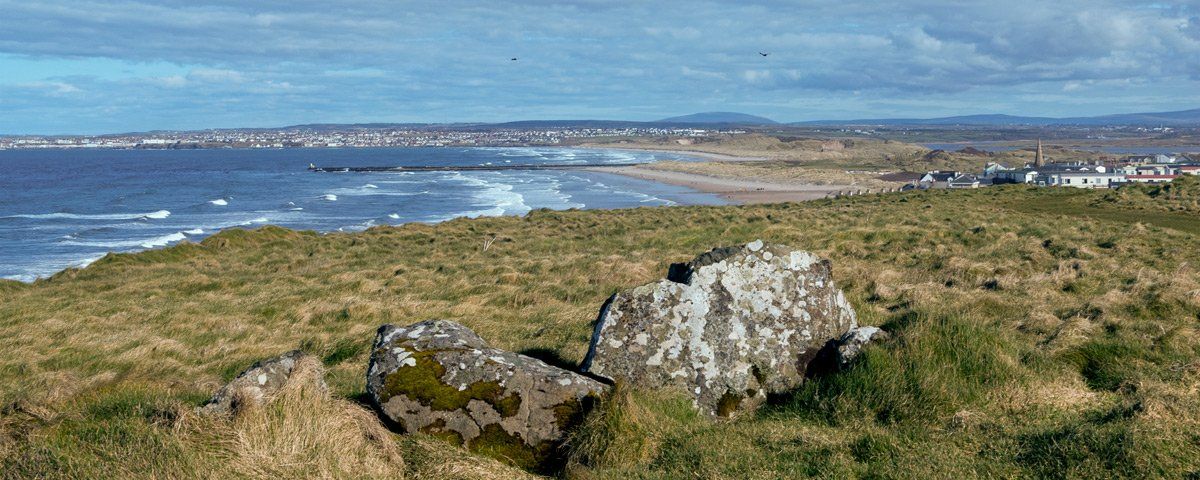The name Castlerock derives from a black basalt outcrop close to the shore, the area around here has seen habitation from when the hunter-gathers made their way up the river Bann and settled at Mount Sandal some 9000 years ago. Evidence of Mesolithic and bronze age settlements have been found in the dune systems on either side of the Barmouth. This area today is a wonderful wildlife reserve which sees thousands of migratory birds stopping off during the season. Up until the advent of the railway, Castlerock was little more than a small collection of houses scattered close to the shore. During the Plantation of Ulster, the Clothworker's Company acquired land that stretched from Coleraine to Londonderry.
The company established the village of Articlave in 1613 which was one of the first settlements on the estate, two hundred years before Castlerock would emerge as a village. In 1853 the railway line finally opened between Londonderry and Coleraine, it was owned and run by the Coleraine and Londonderry Railway Company. A major engineering achievement was the creation of two tunnels cut through two headlands which took the line from Castlerock to Downhill. With the opening of the railway, Castlerock developed as a seaside resort, partly due to a scheme which offered free first-class rail travel to anyone who would build a villa here. The Coleraine and Londonderry Railway Company were eventually bought over by the Belfast and Northern Counties Railway Company in 1871.
Today the railway journey is highly regarded as one of the best in Europe as it hugs the coast and estuary to Londonderry. Both Michael Palin and Michael Portillo have featured the railway journey on their shows. The fabulous railway station designed by John Lanyon, the son of Charles Lanyon was built in 1874, Charles Lanyon had designed many iconic building such as Queens University and Custom House in Belfast as well as the Glendun Viaduct. One connection which the village can be very proud of is C.S. Lewis, who as a child would spend summer holidays at Castlerock with his brother Warren and parents. He was fascinated by the steam trains coming through the tunnel gushing steam as they slowed to a halt at the station.
He would explore the pathways that lead to Downhill Castle and the Lion's Gate, play in the rock pools near the Castle Rock, visit Dunluce Castle and walk on the Causeway Stones, all of these childhood experiences left an indelible impression in his imagination which later found their way into his writings. The magical seashore in Prince Caspian echoes the childhood days and tidal pools, Cair Paravel in The Lion, the Witch and the Wardrobe reminds us of Dunluce Castle, Aslan the great lion inspired from the gates at Downhill and the door handle on the manse of St. Marks Church in Belfast. The house where he stayed in Castlerock has nothing to mark or celebrate this important scholar and author who carried this landscape away in his young mind and created a world of wonder in books.
The castle rock which gave the village its name was where a tragic shipwreck occurred, the 'Trader' from Greenock ran into a severe gale and foundered here during the night of 24th November 1826 with the loss of her crew of eight. The bodies were taken and buried in St Paul's Church at Articlave. The gravestone is just through the main gates and against the wall, this was the closest graveyard at the time. Castlerock, Articlave and Downhill are all in the Parish of Dunboe, an area steeped in history, the name means 'Fort of the Cow', it is said that in the reign of King Art, there was a famine and that a cow called Glasgavlin was stolen from Ballynascreen and tethered to a rock at Downhill known as 'The Tether Rock'. She is said to have saved the lives of the people with a constant supply of milk.





